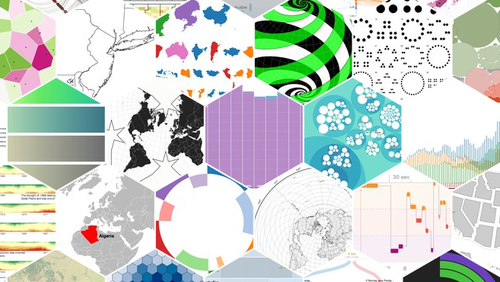Data Liberation 101
As part of pebble {code}’s upcoming Visualisation Hack Day we look at the life blood of Visualisations and how organisations can position themselves to take advantage of unlocking value and meaning through open data.

The end of the excel era ¶
Historically data analysis has been conducted in Excel where an analyst will work in isolation and then present whatever meaning has been abstracted from the data in powerpoint. Increasingly this approach is looking long in the tooth. Users expect to be able to interact with data and to drill down into sections that interest us and potentially even build their own analysis.
The web browser is now a very capable means of delivering a rich and interactive data experience and opens up new possibilities for collaboration and interaction. Libraries like d3.js enable data to be delivered in a visual and interative manner and crucially for the user to explore data themselves.
Data analysis can now be collaborative too. Crowd science for example is just one way that innovative organisations like CRUK are using the wisdom of the crowd to propel their research.
All roads lead to data ¶
For all of the new posibilities that browsers and JavaScript libraries like d3.js present the capabilities of a data visualisations are still bound by the ability to access and use data and the APIs that serve the data.
APIs are an increasingly competitive domain where attracting great developers and analysts can lead to significant value for the data owner.
How to prepare ¶
When making your data available via an API you should focus on how easy the experience of using it will be. Is it easy to discover how to use the data? Is the data format the expected one? How is the data secured? Is the service fast enough for a web experience?
If you do not already have a web service this can be a significant undertaking. If you already have an API it is worth re-assessing these criteria. Often APIs were created before the browser became a viable means of visualising data and are woefully lacking.
Be developer friendly ¶
Organisations that understand that open data can unlock business value and insight into data sets also need to realise that competition for talent is a key factor. How an API is documented is often the first interaction a developer has with a data set. If the API is poorly documented or not documented at all a developer may ignore it entirely. If that developer chooses to use their talents elsewhere this potentially a costly failing.
Some API providers go as far as providing API clients in the most popular programming languages to support the usage of the API.
Great documentation and potentially providing API clients in major languages means developers can get on with what they are interested in - interacting with the data and building on top of it.
Build a community ¶
As well as investing in the presentation of the data tech savvy organisations are helping to support and build communities around data sets. Some hold meetups where developers and entrepreneurs can share ideas whilst others run hack events where real products can be created.
Particularly where the data is the product this can allow the data provider to respond to how third-parties want to use the data, developing the product and interacting with customers at the same time.
Unlock meaning and innovation ¶
Visalisations can deliver meaning that would never be uncovered if data is left on a C drive or hidden in a database somewhere. A recent McKinsey report suggested that Open Data can help unlock $3-$5 trillion dollars in economic value. Open data and visualisations are entirely symbiotic here. Without open data it is impossible to create visualisations and without visualisations it is difficult to extract meaning from data sets.
pebble {code}’s Visualisation Hack Day is just a small example of how organisations can take advantage of highly skilled technologists around the world simply by publishing their data. For a relatively small investment organisations can open their data to a wealth of innovation outside of their organisation and give a serious boost to R&D efforts.
Tags
Can you help make this article better? You can edit it here and send me a pull request.